João Caria Lopes
joaocarialopes@gmail.com
Atelier BASE | Centro de Estudos de Arquitetura, Cidade e Território da Universidade Autónoma de Lisboa (CEACT/UAL), Portugal
Ricardo Carvalho
rcarvalho@autonoma.pt
Centro de Estudos de Arquitetura, Cidade e Território da Universidade Autónoma de Lisboa (CEACT/UAL), Portugal
To quote this text: LOPES, João Caria; CARVALHO, Ricardo – Interview with architect Giorgio Santagostino. Estudo Prévio 16. Lisboa. CEACT/UAL – Centro de Estudos de Arquitetura, Cidade e Território da Universidade Autónoma de Lisboa, 2019. ISSN: 2182-4339 [Available at: www.estudoprevio.net]. DOI: https://doi.org/10.26619/2182-4339/16.2
We are very pleased to have architect Giorgio Santagostino as our guest. Welcome. We would like to start by telling us a little bit about your education, your teachers, exercises you remember…
First, thank you for inviting me and for letting me be with you. I am always happy to be able to talk about work. For my university degree I attended Politecnico Milano, which then had almost fourteen thousand students. Attending classes was not compulsory, as was typical in the 1970s, and it was quite a politicized school. It was then heavily influenced by the Aldo Rossi and Giorgio Grassi perspective, who was also a lecturer there. I attended some classes by Grassi, but I always tried to find a parallel perspective, I don’t know why, perhaps because I had no time to waste. At the time you were not supposed to complete your degree in five or six years, you were supposed to stay longer, the professor decided when you could complete your degree. But Milan is my city, so, at the time, I did not feel it as a major change going from high school to university.
The major experience I had was the year I studied in Porto, in Portugal. I was in my fifth year (in Italy, after the fifth year, you have to write a thesis for about two to three years, which I did later) and this Erasmus program was really relevant for me in every sense. I came to a very small school still in downtown Porto, the School of Fine Arts, and I loved that right away. I was lucky to do my fifth year project with João Luís Carrilho da Graça and that was, as you can imagine, really significant because I came from a heavily history-focused culture and here the approach to the project was more direct, much more pragmatic. I discovered the use of the model as a project methodology rather than as final result, as occurred in Milan, and that was incredible. Besides, the fact that I left home and was living on my own, all that experience was also important.
Another fantastic aspect of being in Portugal was that i could “break in” into construction sites. It was very common for a group of students to sneak into a construction site during the weekend as security was not like it is today. So, this being close to construction, the breaking into works by Álvaro Siza, by João Luís Carrilho da Graça, was remarkable. That did not happen only when I was on Erasmus, it continued when I came back to my traineeship, etc. So, throughout the years I visited the Setúbal school under construction and designed by Álvaro Siza, the Aveiro Library being constructed (I walked on its roof), i.e., I had really significant experiences. It is obvious that, after this, there is no turning back. You go back to Italy with a different perspective.
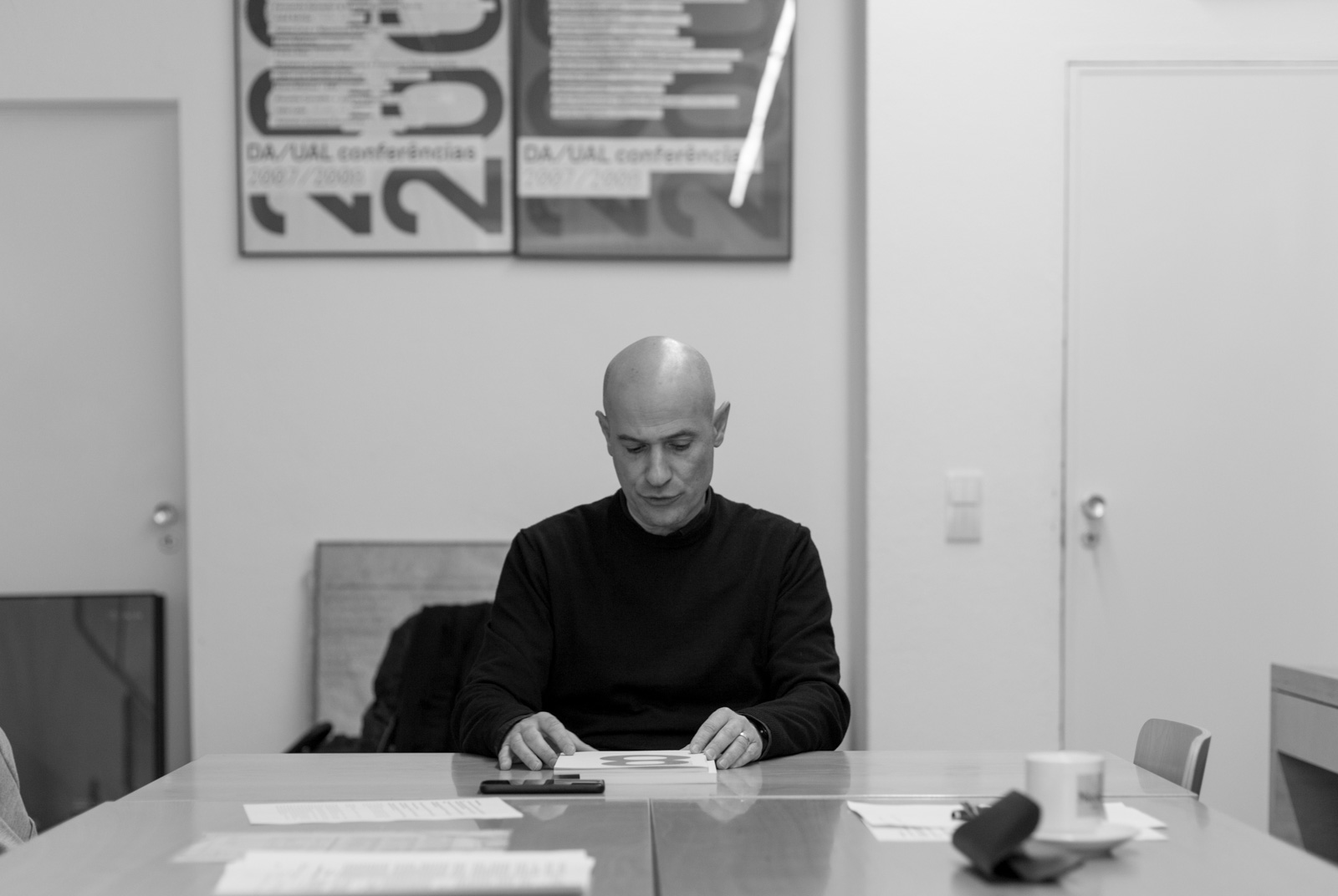
© Gonçalo Henriques + Estudo Prévio
At the time, Portugal was entering the European Community, it was expanding, major construction work by important architects was ongoing, it was a very rich moment, in my opinion. When I returned to Milan, I graduated with professor architect Fredi Drugman, who was an ‘old school’ professor but very open minded (he studied under Franco Albini and was his assistant as well), outside the somewhat “Rossian” context and I managed to graduate with a project that had much to do with my experience here.
And then, experience never ends because you never stop studying. I returned several times to Portugal and worked in several offices. The real training is there, in the offices, because the university never provides you with a lot of technical knowledge, you never leave university very well prepared, I think. I started working at the office of Fernando Salvador and Margarida Grácio Nunes (where I met Ricardo Carvalho), and ended with a longer stay in the office of João Luís Carrilho da Graça, having at last found a way to enter in closer contact with his work. That was where Margarida Margarido and I met. That was my last experience as a trainee (I was already in my thirties) because entering a highly structured office, with a planned design system, as well as a system for organizing and managing project construction had a huge impact on me. If I recall, I conducted my first project constructions there. I think that the basis for my work derives from that very intense experience (at that time I was working nights and at weekends) it was a very intense period for me.
Let me go back a little bit. When we met, at the end of the 1990s, and worked together (which was great, we had a room just for the two of us) I remember that you were different because you had already constructed.
Yes, that is true.
You started constructing at a very young age. Would you like to tell us about that?
Yes, as I was saying, I did not like being idle even at university, and the only thing I could do then was to apply to competitions. I applied to small competitions with some colleagues in Italy and we won, if not the first one, then the second (that was a long time ago): we were supposed to design the refurbishing of social houses, refurbishing and extending an old school building with eight or nine small apartments in a rural area, outside the city of Brescia. That was something, I cannot say huge, it was a competition, a project, but, unfortunately, they did not allocate overseeing the construction to us, as was usual at the time (and still is nowadays). So, it was one of those things that are born but become a child that has to raise him or herself. I believe the construction was carried out later and it was constructed more or less as we had designed but it was not supervised as it could have been.
Right, but what made you an Italian architect unlike the majority is that, if we contrast Italian and Portuguese architecture, there is this vertigo that to construct is something highly difficult and you, as an Italian architect that became interested in Portugal, when you come to Portugal, after university, you already had the experience of construction, which made you a very different architect.
Yes… When I went to any office to ask for work, I would show my portfolio and I remember that I was sometimes asked “how come you are here now asking to collaborate?” When I was here, I also used to work nights and weekends and continued applying to competitions. I even won one, that was constructed right afterwards, when I came back. But these are experiences that occurred with no structure, no organization, I did not pay much importance to it, I did not take advantage of it, really. Also because when I came back to Portugal, I left this momentum behind, I do not regret it but I cannot say that it progressed. They are rather old work, they show the influence of Portugal, obviously, but, as any public construction in Italy, you cannot manage and control it until the end.
Everything is an experience and work; I can still show the project for those houses and they are not bad at all. But I always have the tendency to move forward, I never considered staying in these Italian provinces, I don’t know whether I fell in love with Portugal to leave everything behind again, but that was my luck because I had the chance of meeting very special people.
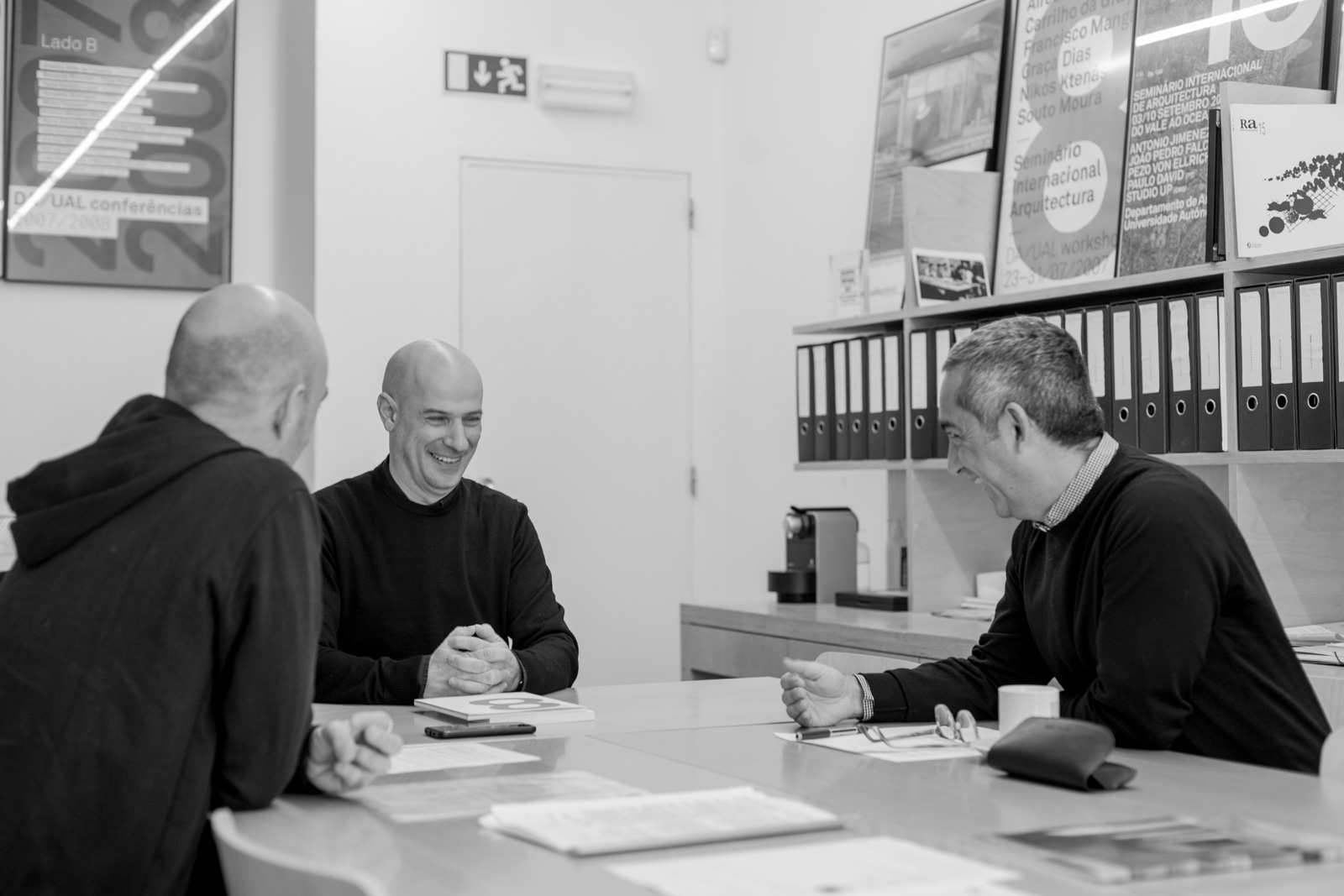
© Gonçalo Henriques + Estudo Prévio
And what motivated you to decide and open an office in Italy with Mónica Margarido rather than here?
That is a difficult and easy answer to give. As you know, at the time, and if I can speak in Mónica’s name, leaving Portugal was something special, i.e., to go to the centre of Europe. Therefore, Mónica, as any other Portuguese architect, viewed Italy, and, in particular, Milan, as a kind of a centre, since it is close to everything. For her, that was important: to leave and widen her horizons. For me, it was going back to having people I had a direct contact with and the fact that I could bring my experience in Portugal to Italy, which could be an asset. That was my idea, anyway. And that turned partially true and partially untrue. Things just aren’t there lying around, waiting for you, it was hard, as you would expect in any change and it was especially hard for Mónica. Obviously, Milan is not an easy city in the beginning. It is a grey, working city. But ours was a planned decision.
And based on competitions, i.e., you decided to move without any order, right?
That is right, we just moved without a workplan. I opened my small office, in a coworking space, as it is common now, a big space with a lot of architects. I left Portugal with a laptop and a printer, which was already a lot for me, and I started applying to competitions. Mónica, who also wanted to learn the language, culture, etc., decided to work in an office in Milan, an experience that lasted almost two years.
Who did she work with?
With Rodolfo Dordoni, Dordoni architects, who is rather famous in design but who opened an architecture area at that time, where there was a good environment because it had a lot of people who had been working for Cino Zucchi. There, she also crossed paths with people that had worked with João Luís, namely Federico Tranfa, so she had a piece of Portugal waiting for her in the office. After that experience, we got together and followed our plan, which was very strange for Portuguese standards, because at the time we only applied to competitions, nobody believed that was what we did. “How are you able to survive?” everyone asked.
That culture of applying to competitions is still going on today at your office.
Yes, our office is almost just known for this kind of strange activity. We are not the only ones doing this, that is true, but when you start applying to competitions it is very difficult to stop, for several reasons. You do not create a bond with your client, i.e., you don’t have clients asking you to design their house knowing that you design schools and gyms, everyone thinks that you just do that kind of work. You must always apply for competitions because in public works there is no ongoing work (it is forbidden by law), so you complete a project and you start another one. But there is also a good side, which is the fact that you are never out of work, you are always motivated and in a magical moment. There is a special moment when you find the solution and that is a great creative moment, it makes life richer. Mónica and I argue a lot in the office, as you would expect. We are always discussing what to do, but I think that leads to happiness because architecture is a major part of our lives.
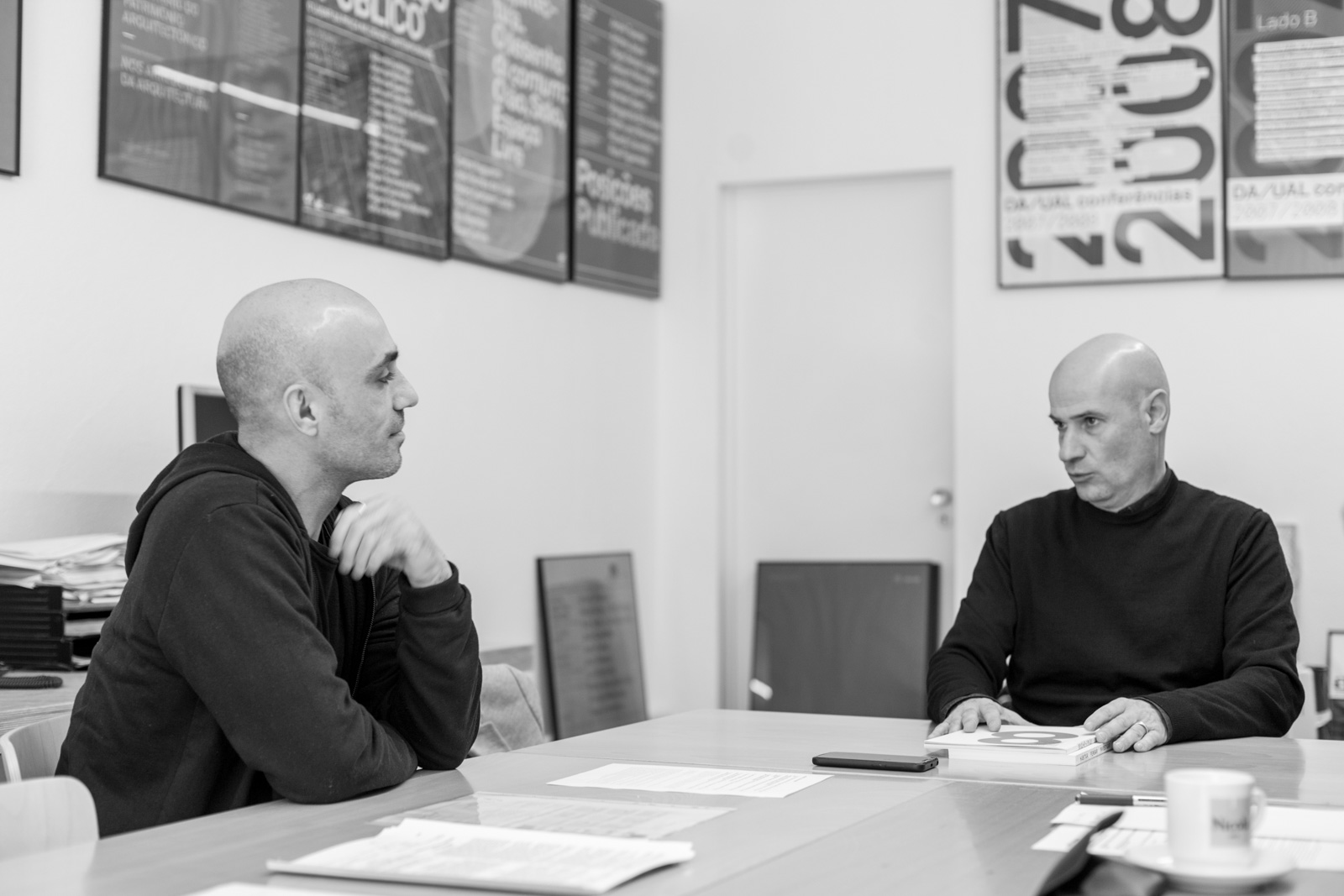
© Gonçalo Henriques + Estudo Prévio
A little while ago you were saying that, after you founded your office and started applying and winning competitions, you were invited to go to Mendrisio. Tell us a bit about that.
Yes, a bit after Mónica and I moved to Milan, Francisco and Manuel Aires Mateus were invited to lecture at Mendrisio, in Switzerland. I was friends with them, we had met here but I had never worked with them. And these things just happen quite casually… I was invited to review the senior students and I was very excited about that, as you can imagine. At the time, I was not very young, but it was something very special, the more so because the other invited architect was Gonçalo Byrne. That really excited me. I was invited two or three more times for final reviews, and I thought: “Well, that turned out ok.” After that, they invited me to be their assistant and that was another important training, which had and has a huge impact on me. I know their work very well, but now I know that more than two incredible architects, they are two special human beings. I am there not just because of architecture but because of my relationship with them. And the facilities at this university are incredible. I have lectured there for almost fourteen years now. We don’t lecture to a class, students can leave everything on their own tables, they have room to leave their models, it is a university where you can practice almost as if you were working in an actual office. There are weekly reviews, all based on the models. It is a space where everything is connected and that is almost an expansion of the students’ work and research… It is an experience difficult to explain in just a few words…
I think I know that experience rather well, also because we have been together at Mendrisio a few times and I believe that the work you do with the Aires Mateus brothers is significantly different from your own work. Manuel and Francisco Aires Mateus do not overemphasise program in their classes, they do not consider it for research, and in the office, you do emphasize that, right?
Yes, that is true.
How do you deal with that difference in approach?
As I have said, I have always tried to not copy others. Nowadays, it is very difficult not to copy, architecture has become very hard to manage. But that is true, in a competition there is always a request and an answer and a program. Recently we have invested in competitions in Switzerland because there are many, they are good, well organized and we always apply with a support office, Krausbeck architetti. We are always aiming to provide a pragmatic and simple answer and that there is a link between our project and the expectations. But I do believe that our approach has to do with the work by João Luís, Francisco or Manuel, i.e., we really focus on the requests and on what the answers to those requests should be. There are different means to do that and we always try to address all the items in the request, not just to what we want to, always still considering the program. If your answer is not what was asked, you are out; there is no playing around, and that is something we consider in order not to waste our time. In Italy, everything is a bit less clear, the winner of a competition may be the one who presents a very strange idea, the design that is more costly, that does not meet the requirements, nobody controls that. In Switzerland everything is crystal clear.
It is pragmatic.
Exactly.
And you see yourself in that pragmatism.
Exactly. On the one hand, it somewhat hinders your creativity, but, on the other hand, I feel it is more straightforward. To tell the truth, I did not really answer your question because your question was about something else. I like the work by Francisco and Manuel very much, so I am influenced by it, but I always try not to be their “pupil”, not because I don’t want to but because I don’t think that is honest towards them. I think their work is incredible.
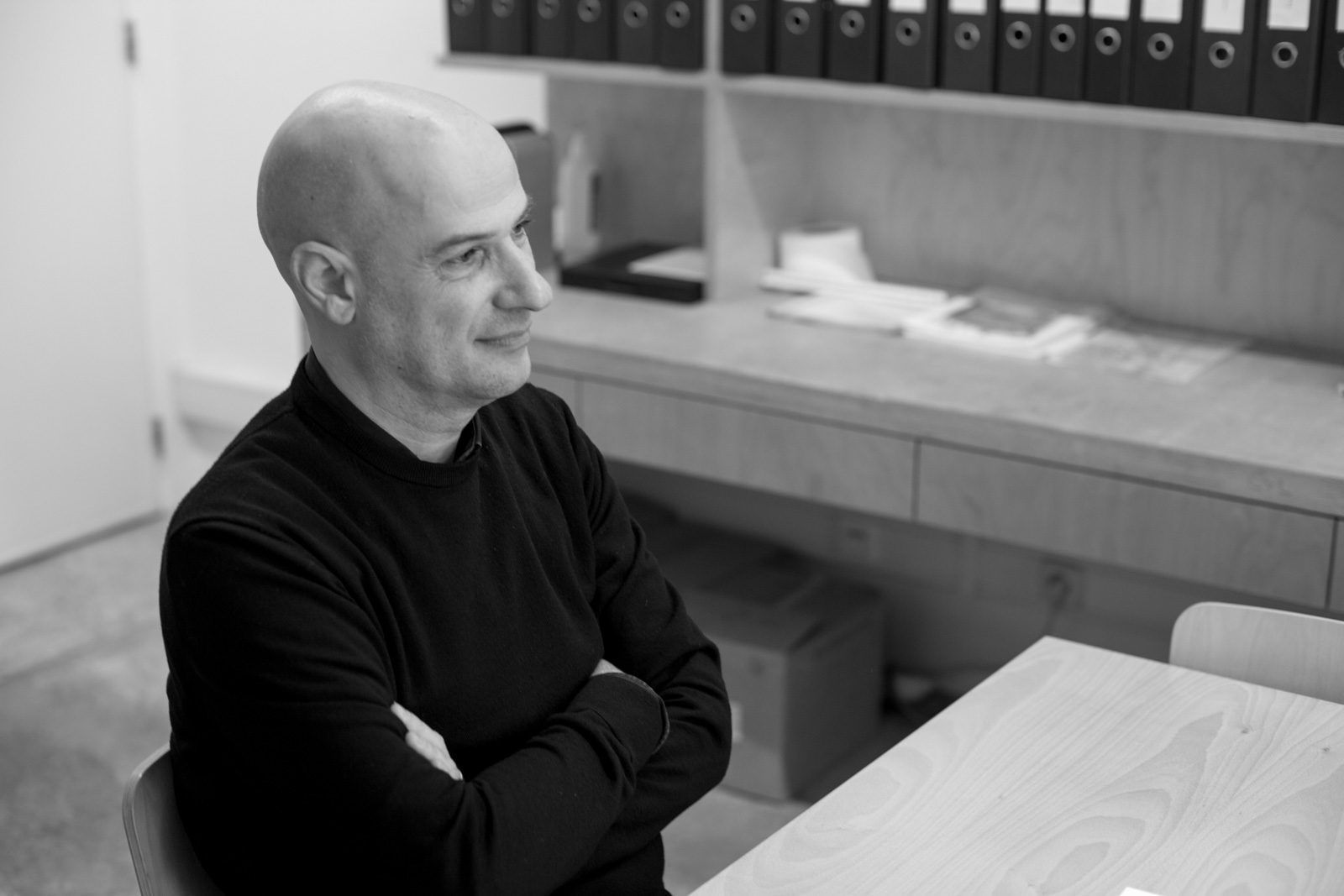
© Gonçalo Henriques + Estudo Prévio
In your work, you also talk about space reversibility, the fact that space can return to what it was before. Is that something you consider in your office?
Yes, in public works it is very common for a space to have different functions at different times. We have convents that are now museums or school, old hospitals that have suffered changes. That reversibility is a basis for our action, but I think that that possibility for whoever is managing or promoting it, is a good basis for changing its conditions in the future. In architecture, when there is a structure and the clearer that structure is, the better we can introduce a program in a system. This very clear idea of creating a structure helps us define the project. It helps us not to wonder so that the construction may be easy, economical and work well. And constructive minimalism is also attractive: if the structure is beautiful, it has power. That is not always possible, of course, but it gives us the feeling that we are going in the right direction. The funny thing is that in Switzerland you can do that with concrete, i.e., they do not think that reversibility is only possible with wood or with steel, for instance. Concrete is viewed as a reversible material, one that can be used in future refurbishing.
But though we started this conversation refusing the Rossi and Grassi legacy, we are now discussing it…
Sure (laughs). The school leaves its marks, I have several of Grassi’s books and he was a reference in the beginning. My final thesis at Politecnico was on a library, in exposed brick, which reflects the atmosphere in his projects, for sure.
I would like to ask you this: in a book I have read about your work there was a long reference about the relation between research in the office and the fact that even small refurbishing projects are a reason to research how people live. Nowadays, at least in Portugal, there is a lot of discussion about research methodologies in architecture, that has to do with linking what you do in the architecture office and academia. What is your position?
Well, since we have refurbished several houses, mostly friends’ houses, the domestic scale is that in which the architect may do most research. I can say we never had the opportunity to do work where we could push it to the limit, in fact. In the case of State construction, there is obviously ongoing research. When, in one year, you apply to almost ten competitions, it is obvious that in each project we propose a technology, a different construction system, sometimes radically different from the previous project. This is a type of research, mostly on our relations with specificities and with other architects who are our partners, that provides us a means to grow; it is a type of research that derives from our interactions with others, new impulses to act, new materials and technologies to use that sometimes arise by chance rather than something we are looking for.
Our office has never stopped long to think about what we are doing. We are always more focused on doing architecture. It is a crucial part of our life, but we never spent much time on organizing things… I don’t know if I am answering your question clearly because we don’t think that we have created our own perspective. However, people looking in do say “your work has continuity, there is a relationship among all your work”. I think that there is a context to each project, there is an answer, there are contingencies. And I think that those contingencies organize our research. We are given contingencies and our research is to meet those contingencies as directly as possible. That is my opinion, at least…
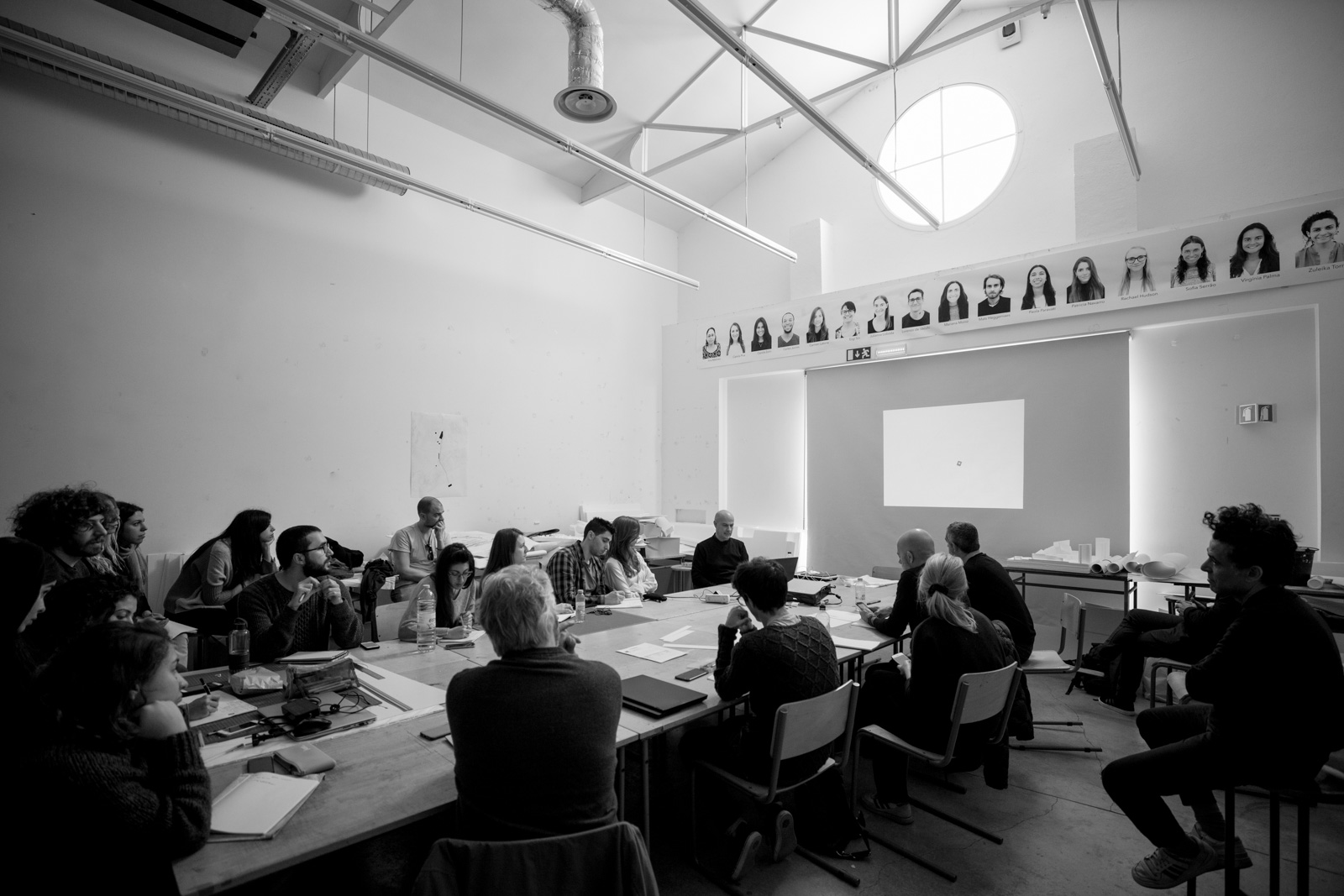
© Gonçalo Henriques + Estudo Prévio
You have an opportunity that we, in Portugal, consider rather interesting and that is that you can be in the knowledge of what is being done in Portugal while you are on the outside. Tell us a bit about your view of Portuguese architecture, what do you think about Portuguese architecture nowadays?
I am not up to date on everything. And everything is changing very quickly. The Italian situation, where we live (for which you were required to do a long interview) is a situation in which public works, as you can read in the papers, are on hold, there is huge political chaos… But everything has been organized focusing on the economy, on economic requirements, for a few years. The law on public works is a law applied to everything and everyone – to those building a highway and to those building a gym. For almost a year we have been waiting for new public works, they keep on asking things and they have not paid yet… Based on my past and recent experience, we see Portugal as a country that more or less always allocates projects to good architects. Maybe not always through competition, sometimes directly, but the State has always managed to know who are the high-quality architects, and those architects have had the chance to build the Porto school and the Lisbon school. There is a lot of investment now in Lisbon – the authorities are inviting young architects, architects my age (not very young anymore…) who are intervening in the city and I think that is fantastic. The Italian situation is quite the opposite, so it is difficult to say anything different than that the situation in Portugal is heaven. And Switzerland is the other country we look at with interest because there the architect is still at the core of everything in the project. There is also a dispute, in the Architect Association (because some things are also not working out well) but architects have been able to face politics, which did not occur in Italy. The decrease in the relevance of the role of the architect started about thirty or forty years ago in Italy and nowadays the architect as a person does not exist in Italy.
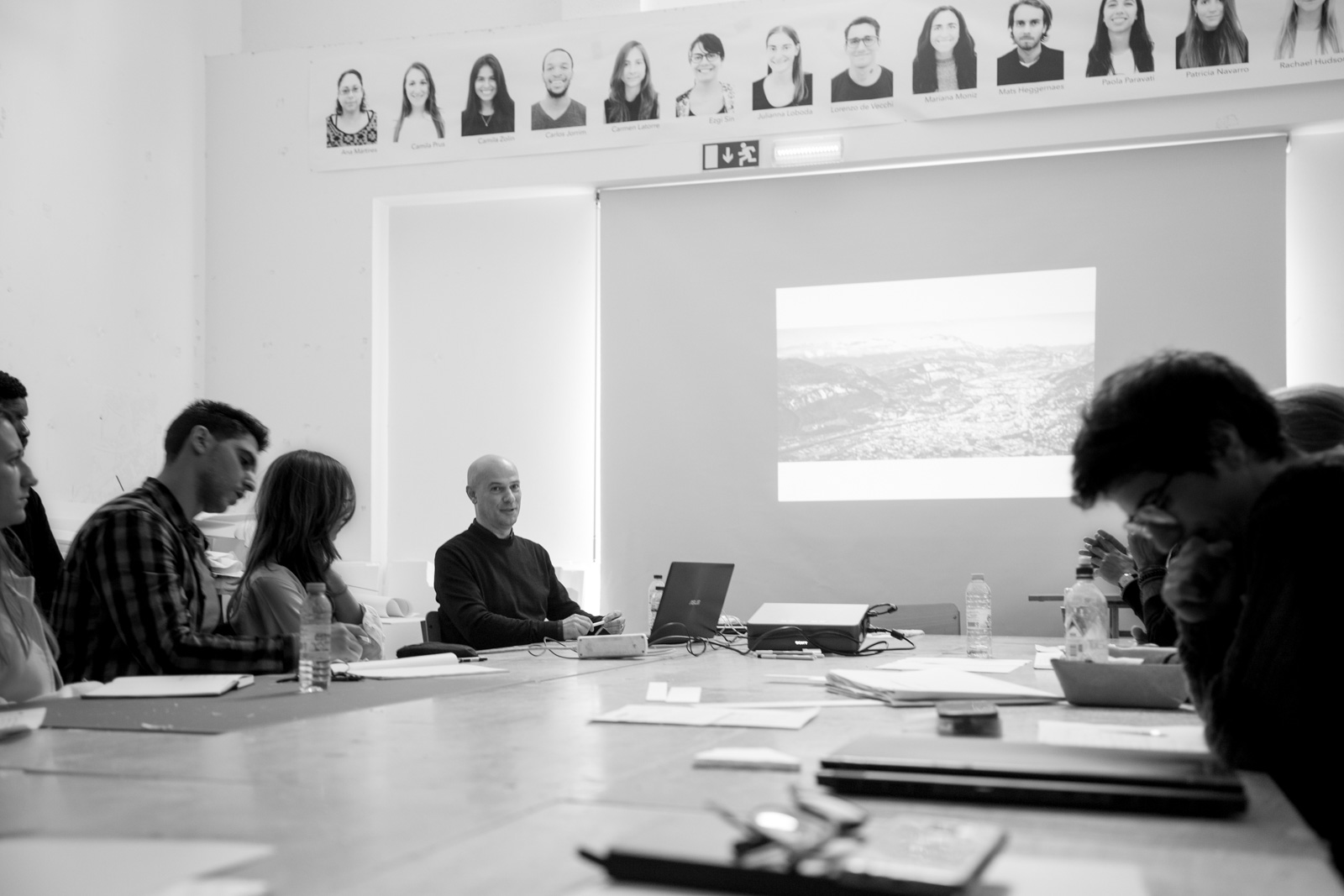
© Gonçalo Henriques + Estudo Prévio
I think my previous question had also to do with a cultural perspective and not only a professional one, which is very important. So, do you think there is still such a thing as Portuguese architecture?
I think there is, we have architect Siza Vieira who is still constructing as if he was a young man. Now he is constructing outside Portugal, but he is visibly Portuguese. The Aires Mateus brothers who are well-known internationally and are a reference, architect João Luís Carrilho da Graça, who recently completed the Cruise Terminal. This evidences a strong cultural image. It is true that in the 1990s the focus was Spain and Portugal and now it has shifted to Switzerland, Japan, South America, they are the novelties that more research is conducted on nowadays.
The North of Europe as well.
The North of Europe, yes. Belgium is now in fashion, with is well acknowledge offices. Portugal is still seen as a very solid and acknowledged structure. However, I realized that a bit of Europe has become an influence, as it happened here in Italy – all the electronic bureaucracy, the stamps, the public service submissions. I have had issues with electronic submissions that we have had for quite some time in Italy and I hope that will not hinder the character of some Portuguese architecture, because it is important not to smother the freedom you feel here.
Do you envision as positive the next years of your office or of architecture at international level?
Yes, last year we won two important competitions and we have a different perspective, the office size is the same, but we feel more relaxed. But we can never stop, I feel that we can relax a bit more, that we can move forward but, honestly, I have had wonderful moments and very difficult ones. So, we just need to move on. I have never stopped thinking the same way, that we must be careful. I was never one of those people that win a competition and double the size of their office, the office is still just me, Mónica and an assistant. And we don’t want to give up a part of our lives – architecture is at the core, as you can imagine, but sometimes we also stop for a long period of time. The office is sometimes closed for several months in the Summer. We have never wanted a big office; we do not want it to become much bigger than it is now. Our objective is to grow without us losing control, and I think that will never happen… Of course we want to have more work but we also want to be careful.

